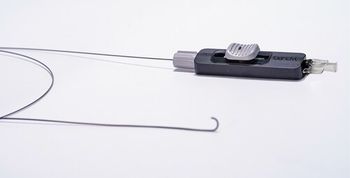
Five steps to improve a practice’s revenue cycle management system
Practices must focus on building an efficient RCM system that helps them collect payments while allowing them to focus on patient care.
As small practices grapple with a plethora of issues affecting their ability to collect payments from patients and health insurers, Bird Blitch, chair of the Healthcare Information and Management Systems Society (HIMSS) Revenue Cycle Improvement Task Force, said practice leaders can expect greater difficulties ahead.
Blitch told Medical Economics that the shift in payment responsibilities, higher deductibles for insured patients and problems with transparency across multiple systems are encroach on physicians’ ability to collect payments.
Among the most important shifts in the industry, Blitch said, is that a small practice five years ago would receive 90% or more of its revenues from Medicare, Medicaid or insurance companies like Blue Cross Blue Shields or Humana, and patients made up 10% of revenues. That payment landscape has changed.
“Today, in many cases payments make up 33% government, 33% insurance companies and 33% patients which vary from practice to practice. Providers are struggling to cope with getting their arms around the fastest growing payer which is the patient,” Blitch said.
As chairman of HIMSS’ Revenue Cycle Improvement Task Force, Blitch said members, made up of industry stakeholders that represent all aspects of the healthcare revenue cycle, introduce new ideas to tackle the issues around collecting payments.
These issues include everything from improving the patient financial experience, increasing providers’ ability to be reimbursed from insurers and patients, encouraging payment at the beginning of a patient/physician encounter and finding ways to improve claim denials.
“We’ve identified gaps across the patient payment journey and we are looking inside the industry to see if we can come up with solutions that involve developing better processes and technology,” Blitch said.
One example of a process, Blitch said, is developing flexible and convenient payment options that help patients pay an unexpected expense easier, such as offering an online payment portal with payment plans or financing options. On the technology side, developing a unified system that incorporates reporting and analytics tools to help providers find out the root cause of revenue trends, for example, will help providers improve their revenue cycle management (RCM) system.
Five ways to improve an RCM system
For small practices of one to five physicians that want to improve their RCM system, Blitch says there are five best practices to follow.
1. Focus on the patient. It’s better to approach patients thinking about taking care of them rather than thinking about whether they can pay a practice. If physicians do a good job caring for the patient, they will make more money for the practice. Successful small practices, like successful companies, are the ones that focus on the consumer.
2.Consolidate systems. If physicians can implement a unified platform from those systems that track patient care episodes from registration and appointment scheduling to the final payment of a balance, it will simplify their work. Consolidation makes life easier.
3.Focus on collecting payments early. Like a hotel that takes credit card information at check-in, it’s easier to collect patient payments at the beginning of a patient’s visit. Physicians should find ways to engage the patient as much as they can and help them understand financial obligations. Make sure there is price transparency by sharing with patients the details of the services being provided and the costs associated with those services.
4.Give patients alternative ways to pay. Either by electronic bank payments, a health savings account, credit cards, cash, check, online, in person or by phone.
5. Focus on improving systems on the back-end. Think about how the practice will get payments to its bank account. If payments are mailed, think about how to manage return mail, or bounced checks. If the practice needs a pay-by-phone system, think about what company will manage that part of its collection service. In short, physicians must implement an RCM system that allows them to get back to managing patients not payments.
Newsletter
Stay informed and empowered with Medical Economics enewsletter, delivering expert insights, financial strategies, practice management tips and technology trends — tailored for today’s physicians.















